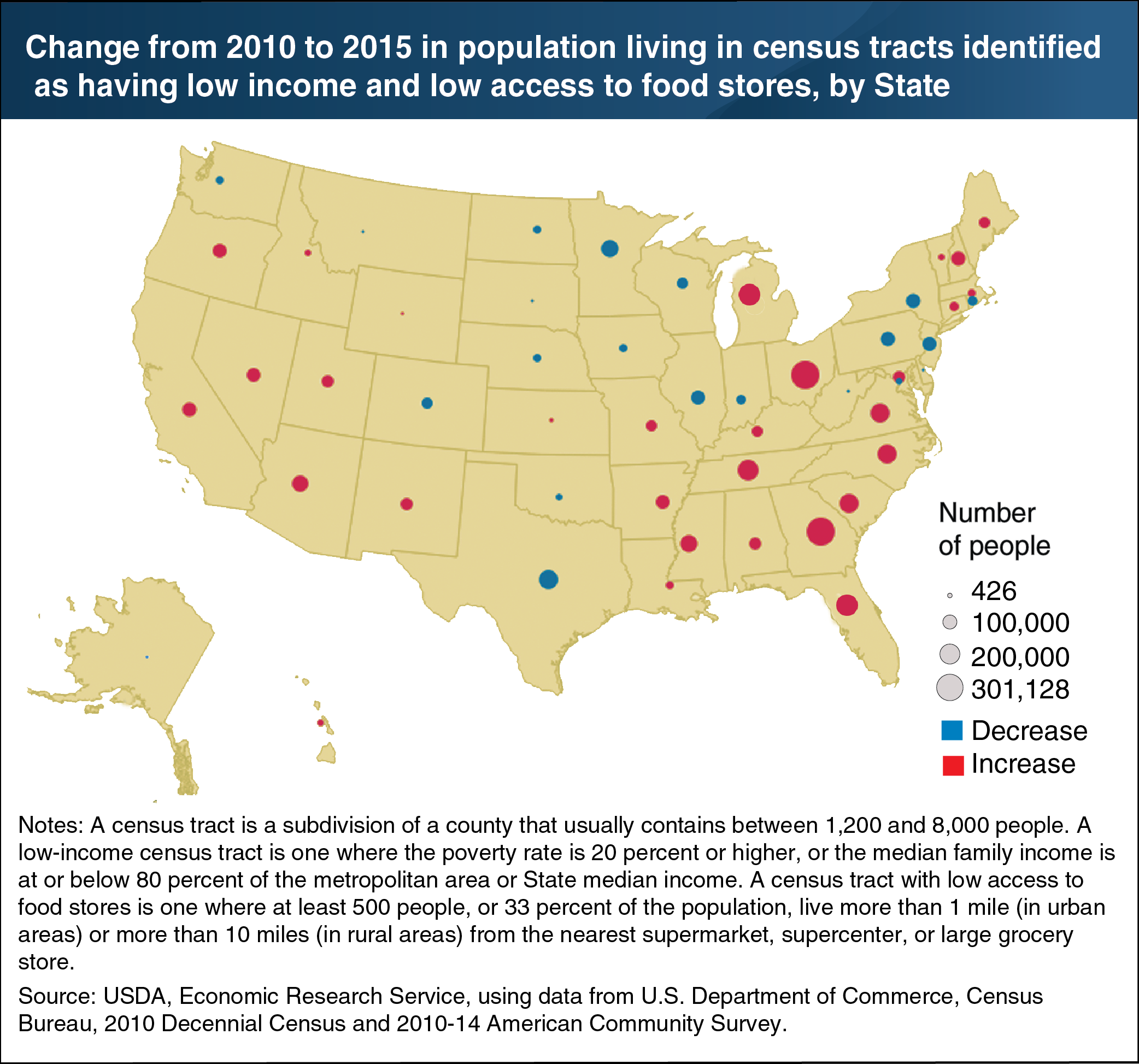Number of people living in low-income areas with low access to food stores grew in some States over 2010-15
- by Alana Rhone
- 12/11/2019

Limited access to food stores (supermarkets, supercenters, and large grocery stores) stocking a variety of affordable and nutritious food can make it harder for some Americans to eat a healthy diet, especially for those with low incomes. For people who live in low-income census tracts with low access to food stores (called LILA census tracts), the quality of their diets could be at risk. Estimates calculated by ERS reveal that from 2010 to 2015, the number of people who lived in LILA census tracts in the United States increased by 2 million. Ohio had the greatest increase in number of people living in LILA tracts—an additional 301,000 Ohio residents lived in LILA tracts in 2015 compared with 2010. Georgia, Florida, Tennessee, and Michigan were also among the States with the largest increases in LILA population. In most cases, the increase in a State’s population living in a LILA census tract was the result of more census tracts meeting the definition of low income after the Great Recession of 2007-09. Texas had the greatest decrease in LILA population from 2010 to 2015, with the number of people living in LILA census tracts falling by 140,000. Minnesota, Pennsylvania, New York, and New Jersey saw the number of their residents living in LILA tracts fall by between 62,000 to 113,000 people over this period. This chart appears in the ERS data visualization, “State by State estimates of low income & low access (LILA) populations.”

